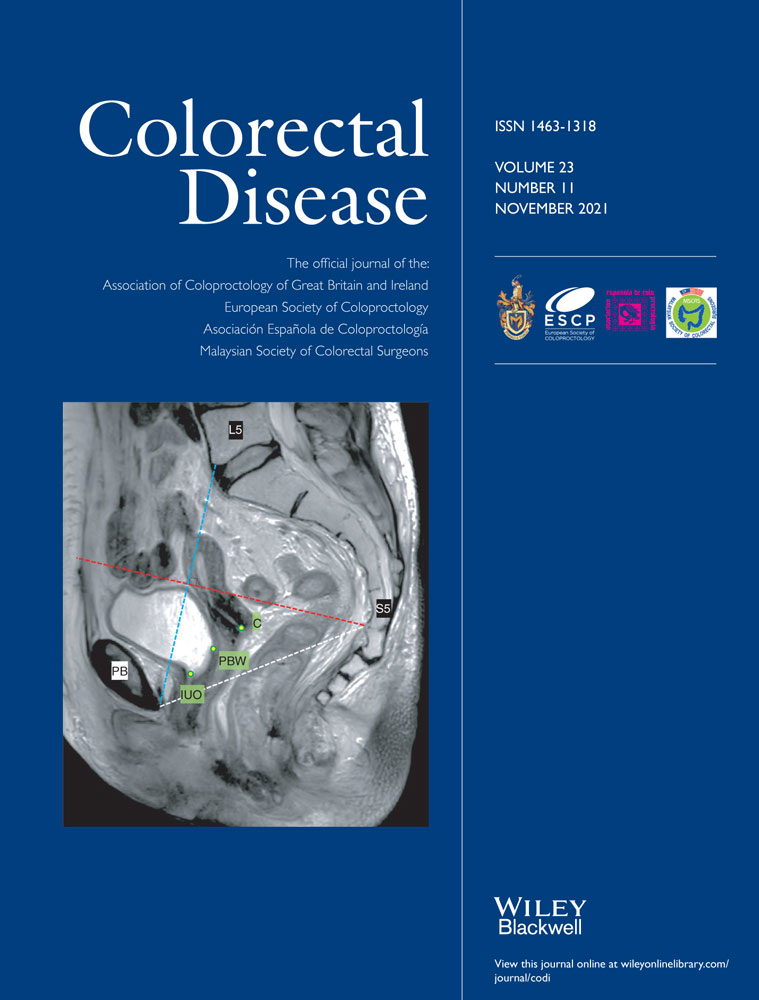Elective minimally invasive surgery for sigmoid diverticulitis: operative outcomes of patients with complicated versus uncomplicated disease
Presentation: Poster presentation at the annual meeting of the American Society of Colon and Rectal Surgeons, 19–23 May 2018, Nashville, TN.
Funding information
None.
Abstract
Aim
The aim of this work was to compare the results of elective minimally invasive surgery between patients with complicated sigmoid diverticulitis and those with uncomplicated disease.
Method
An institutional review board-approved database was searched for all consecutive patients who underwent elective minimally invasive surgery, including laparoscopic, hand-assisted and robotic sigmoidectomy, for diverticulitis between 2010 and 2017; they were classified according to the modified Hinchey classification as having complicated (abscess, fistula, stricture, obstruction, bleeding or previous perforation) versus uncomplicated disease. Data recorded included baseline demographics, indications for surgery, operative details and complications.
Results
Three hundred and twenty-five patients underwent elective sigmoidectomy for complicated (n = 105) and uncomplicated (n = 220) diverticulitis. Surgical indications for complicated disease were abscess (n = 74), stricture (n = 14), fistula (n = 28) and bleeding (n = 7). The two groups were statistically comparable for age, gender, body mass index and American Society of Anesthesiologists score. Patients with complicated disease had higher rates of concomitant loop ileostomy creation (9.5% vs. 0.9%, p < 0.001) and synchronous resections (9.5% vs. 2.7%, p = 0.01), higher volumes of blood loss (177 ± 140 vs. 125 ± 92 ml, p < 0.001), longer length of stay (5.6 ± 3 vs. 4.8 ± 2 days, p = 0.04) and longer operating time (218.2 ± 59 vs. 185.8 ± 63 min, p < 0.001). There were no significant differences in anastomotic leakage (3% vs. 1%, p = 0.3), conversion to laparotomy (4.8% vs. 2.3%, p = 0.3) or overall complications (36% vs. 25.9%, p = 0.06) for complicated versus uncomplicated disease, respectively.
Conclusion
Minimally invasive surgery for complicated diverticulitis resulted in higher rates of construction of proximal ileostomy and synchronous resections and longer operating times and length of hospital stay. Otherwise, it has outcomes that are not significantly different from the results recorded in patients with uncomplicated disease.
CONFLICT OF INTEREST
None.
Open Research
DATA AVAILABILITY STATEMENT
Data available on request due to privacy/ethical restrictions.




